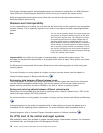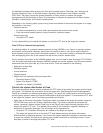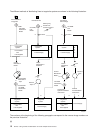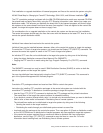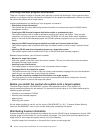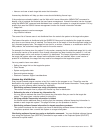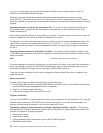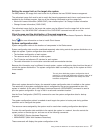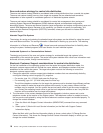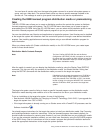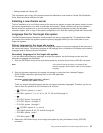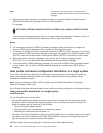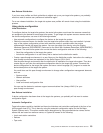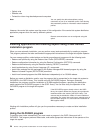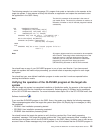
Save and restore strategy for central site distribution
The save and restore strategy should be considered when making distributions from a central site system.
The save and restore strategy can vary from target site systems that are attended and somewhat
independent of other systems to unattended systems in a distributed systems network.
The save and restore strategy should be considered for central site management when saving and
restoring System Resources Management (SRM) database objects and associated configuration
description objects. The save and restore functions (save configuration and restore configuration) save and
restore SRM database objects. Because of this capability, you should not specify the parameter *ALL
when using the Restore Configuration (RSTCFG) command, unless you also want to restore SRM
database objects.
Attended Target Site Systems
The strategy for saving and restoring the attended target site systems can be defined by using the normal
save and restore activities. The saving information is described in Backing up your server. The restoring
information is in Backup and Recovery
. Normal save and restore activities allow for flexibility when
saving the system, licensed programs, and user libraries for each individual system.
Unattended Systems in a Communications Network
The design and control of the save and restore strategy for unattended target site systems is the
responsibility of the central site system. The central site system decides what critical user information must
be saved, and can provide, through communications,
Electronic Customer Support considerations for central site distribution
On the first installation of the operating system from the central site system distribution media, the
electronic customer support data will include the name, address, and telephone numbers that were
established at the central site system. The target site system must do the following to correct the
electronic customer support data:
1. Change the electronic customer support data telephone numbers that are automatically dialed by
running the following control language (CL) programs:
v For service, type CALL QESPHONE and press the Enter key.
v For marketing, type CALL QTIPHONE and press the Enter key.
The toll-free telephone numbers for the target site systems must be checked since different prefixes
may be needed to make the target site systems dial correctly. In many cases, different toll-free
numbers may be required. You can contact the service branch office to get the correct numbers to
use. Contact the marketing branch office to get the local telephone numbers to use if any IBM link
functions will be available from the target site systems.
2. The information in the contact database must also be changed to include a person and a voice
telephone number at the location of the iSeries system. This telephone number is needed to ensure
that any service calls placed by using the iSeries electronic customer support are handled properly. To
change the contact database:
a. Enter the Work with Support Contact Information (WRKCNTINF) command from any command
line.
b. Select option 2 (Work with Local Service Information) on the Work with Support Contact
Information display.
When the Work with Local Service Information display is shown, select option 2 (Change Service
Contact Information). This shows the Change Service Contact Information display on which you can
change the contact database.
18 iSeries: Using central site distribution to install multiple iSeries servers



